Both a percussion instrument and a stringed instrument, the piano produces sounds by means of small felt hammers striking metal strings. With its 88 keys, black or white, the piano has a very wide range!
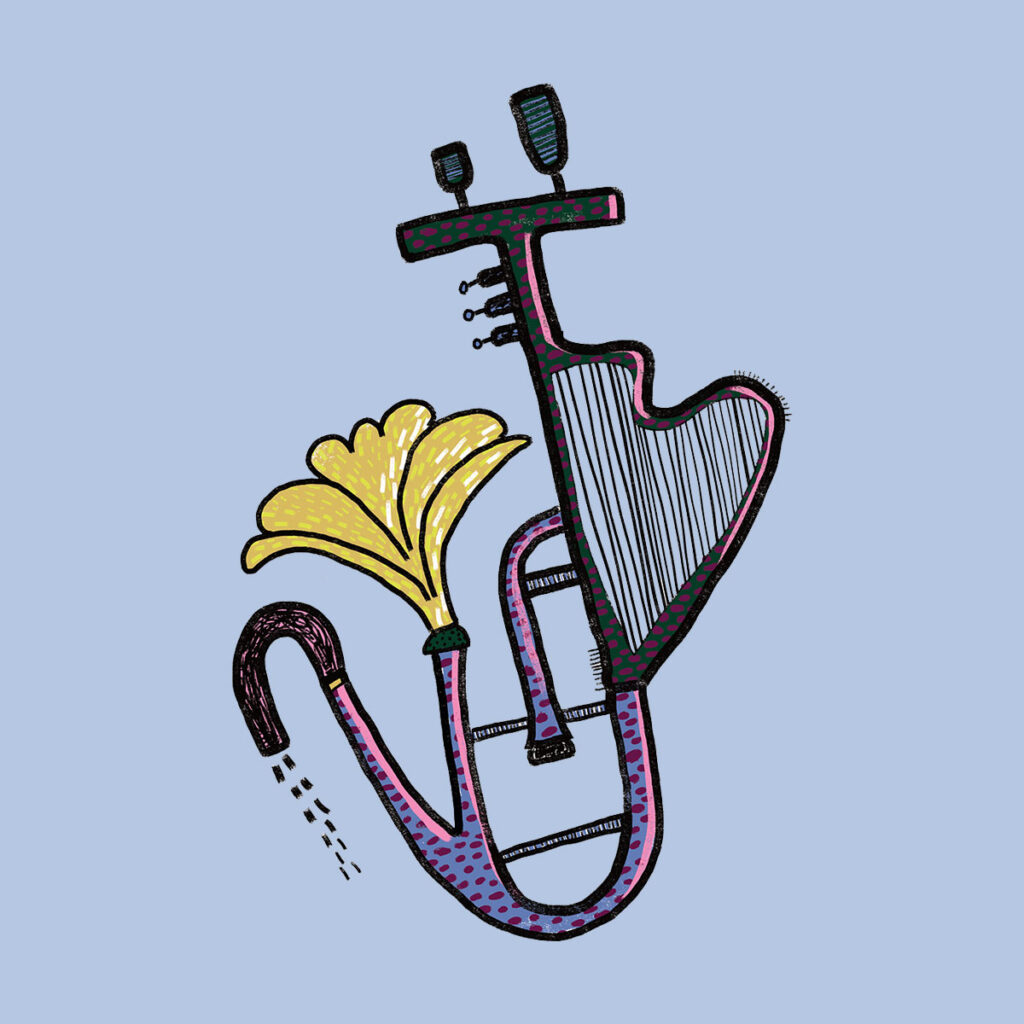
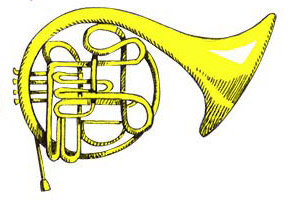
From the king’s court to the Maison symphonique de Montréal: a brief history of symphonic music
In Europe, until the end of the fifteenth century, music was played to entertain and make the king’s court dance. Musicians were either members of noble families or in their service.
Since the 17th century, developments in musical instruments and social changes have enabled composers to invent a multitude of musical forms for the orchestra.
From the Baroque era to the present day, discover the great periods that have marked the history of symphonic music.
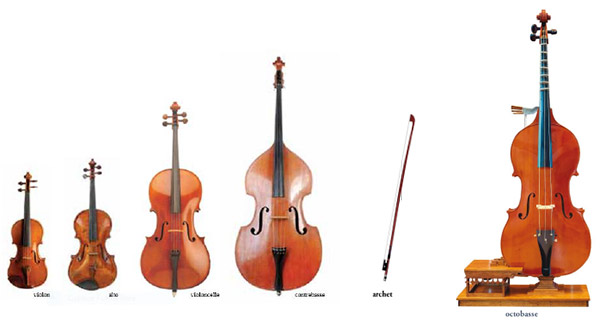
a) The bowed string family
All bowed string instruments are made of wood, have a sound box and a neck with four strings stretched across it. To obtain a sound, the strings are rubbed with a bow made of horsehair.
Within the large family of bowed strings, each instrument section plays its own role. Because of their small size, violins play the highest notes. They also play the melodies, some of which have very complex rhythms. They are the most numerous of this family and are divided into two sections: first and second violins.
Slightly larger than the violin, the viola has a deeper sound and a warmer timbre. The viola section adds depth to the melodies and completes the harmonies.
The cello, on the other hand, is the instrument whose timbre most closely resembles the human voice. A cello solo can trigger strong emotions in a human being, such is the power of its vibrations!
Even more imposing, and therefore deeper, than the cello, the double bass provides the rhythmic and harmonic foundations of the string family.
To complete this overview, the OSM is fortunate to have a fifth instrument in the family of strings: the octobasse. This giant instrument has the deepest, deepest timbre of the bowed string family!
In this excerpt, each section of the string family plays a particular role: the high notes and the melody are played by the first violins, the support for the melody by the second violins, the depth and effects by the violas, the bass chords by the cellos and the pulse by the double basses.
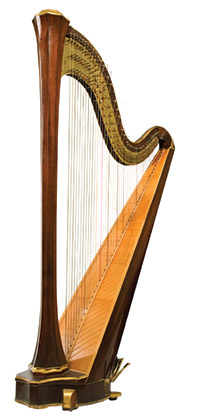
Although the harp is a very old instrument, it did not make its appearance in the orchestra until the 19th century. To play it, the musician plucks the strings with his fingers. The harp is also equipped with seven pedals to change the pitch of the strings.
Did you know?
Although they belong to the bowed string family, violins, violas, cellos and double basses can also be played by plucking the strings. This is known as pizzicato.

Both a percussion instrument and a stringed instrument, the piano produces sounds by means of small felt hammers striking metal strings. With its 88 keys, black or white, the piano has a very wide range!
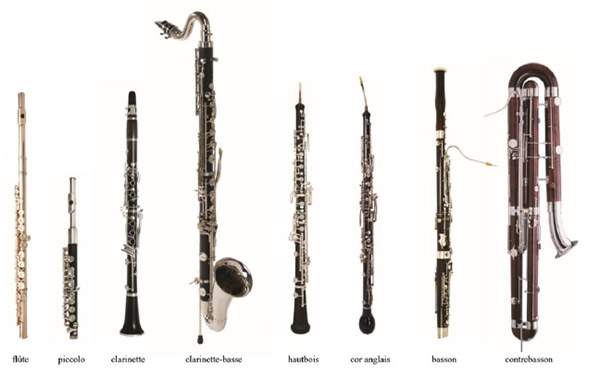
Tchaikovsky’s First Piano Concerto is an essential work in the repertoire for piano and orchestra. From the very first notes of the work, the pianist demonstrates the complexity of the score with intensity and virtuosity. Listen here to the first appearance of the theme played by the piano.
It’s well known that the flute is a highly virtuosic wind instrument. Its wide range allows it to change the colour of its timbre: it can have a warm, human-like sound in the low and middle registers, but also sound like a bird in the high register. In this excerpt from Smetana’s Moldau, the warm timbre and virtuosity of the instrument are highlighted.
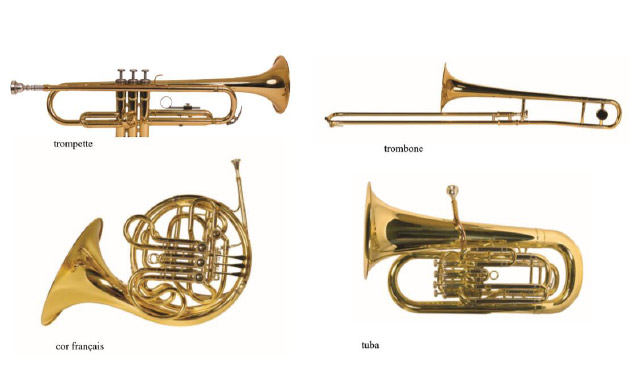
You can see them from a distance because they glow, and you can hear them clearly because their sound is so powerful: these are instruments from the brass family! To produce a sound, you blow into the mouthpiece, making your lips vibrate.
Easily recognisable by its circular shape, the horn’s name comes from the horns with which the first versions were made. Its warm sound seems to come from far away. To play the horn, the player places the right hand inside the bell and the left hand on the valves. Its distant military past gives the trumpet its dazzling sound. Equipped with three valves, it is made from a brass tube measuring 1.50 metres. It was the invention of the valve and valves in 1814 that enabled the trumpeter to play notes with great precision. The trombone’s flexibility enabled it to join the orchestra in the 19th century. With a tubing of almost 4 metres, it is the only brass instrument to use a slide instead of valves to change notes. This enables it to produce a wide variety of sound effects. As well as playing the bass line in a piece, the tuba can also make sustained melodies in the lower register. The depth of the sounds emitted by this instrument can give certain passages a colour that is either comic or funereal.
Brass instruments often represent a symbol of power in music. In the second movement of Symphony No. 10, this is exactly what the Russian composer is trying to describe. Shostakovich was thinking of the Russian dictator Joseph Stalin and his regime of fear when he wrote this work. Listen to the strength and intensity of the brass section in this passage!
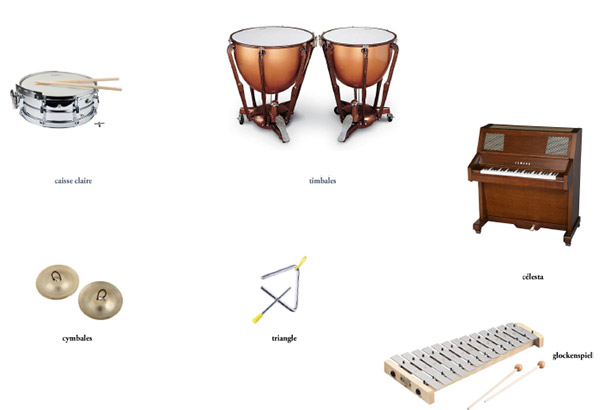
Percussion is a group of instruments that are very different from one another. To play them, percussionists strike, shake or scrape them. There are percussion instruments made of metal, wood or even a skin (or membrane) stretched over a wooden frame. To distinguish between all these types of percussion, there are two main families: the family of definite sounds, which essentially comprises keyboard percussion instruments (glockenspiel, xylophone, marimba, celesta) and timpani, and the family of indeterminate sounds, such as the snare drum, bass drum, triangle and cymbal.
In the early twentieth century, as the world opened up, instruments with indeterminate sounds, such as the tam-tam from Asia, and instruments with determinate sounds, such as the xylophone, glockenspiel and marimba, inspired by African instruments, carved out a place for themselves in the orchestra.
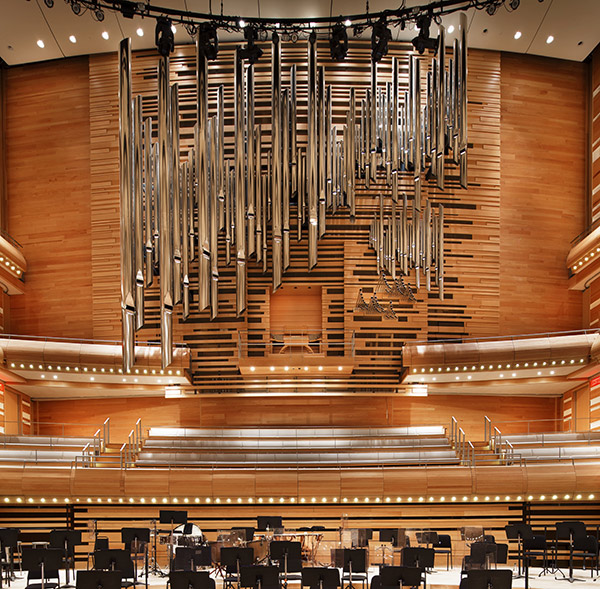
In 2014, a new instrument made its debut at the OSM and in the Maison symphonique: the Grand Orgue Pierre Béique. Donated by the generous support of Jacqueline Desmarais, it was named after the OSM’s founder and first general director: Monsieur Pierre Béique. This organ has no fewer than 6489 pipes and weighs 35 tonnes! This enormous instrument was built right here in Quebec, by the Casavant Frères company.
Did you know?
Although the organ was originally a church instrument, today it can be found in many concert halls! Many pieces of music feature the organ, known as « the king of instruments », such as this symphony by Camille Saint-Saëns:
When brought together, the four families of instruments offer a whole panoply of sounds and timbres (the specific sound of each musical instrument) that enable the orchestra to play a wide variety of music.
The formation of the orchestra has changed over the course of history: the first orchestras were much smaller than today, consisting only of the string family and a few wind instruments, such as oboes and horns. Over time, composers have constantly added new instruments to this core and explored more and more sound combinations. Some works now require more than a hundred musicians on stage!
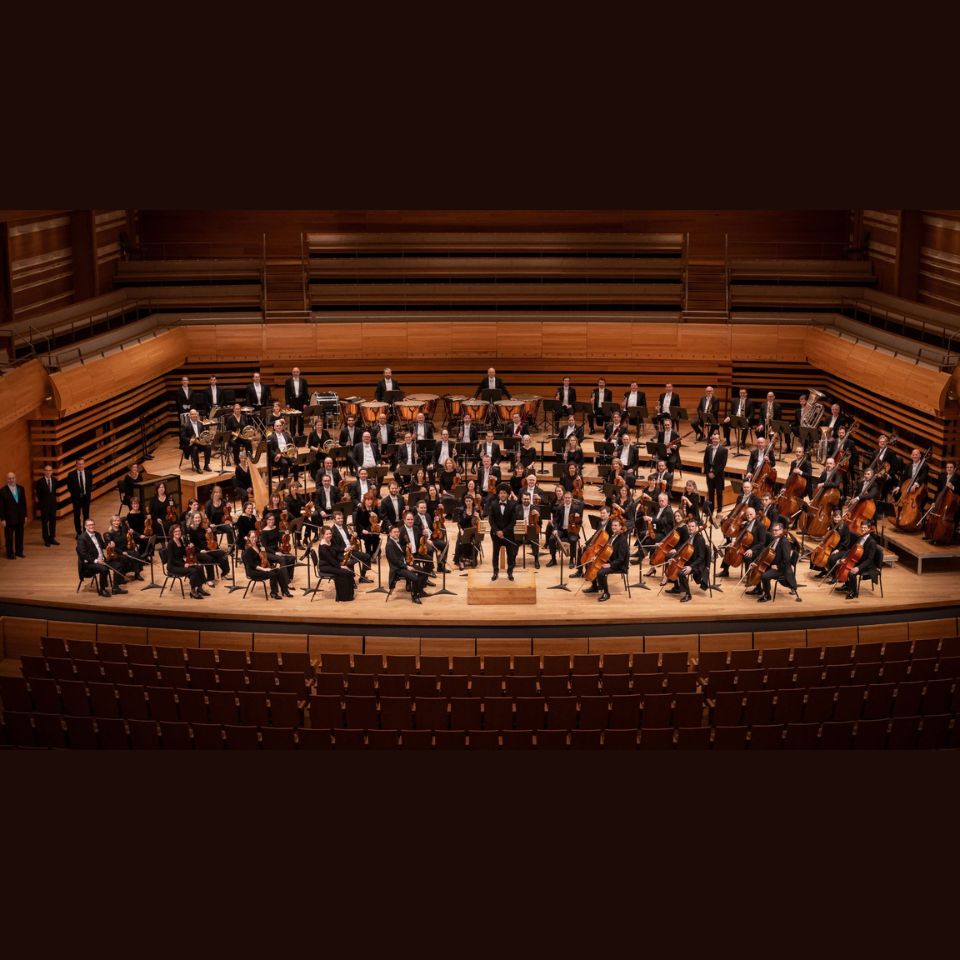
In the world of classical music, the symphony is the instrumental genre par excellence – after all, we are talking about a symphony orchestra! The word itself means « to sound together » (sym = together, phone = sound). The earliest sinfonia were short instrumental pieces played by the orchestra before an opera; they typically consisted of three contrasting sections, lively-slow-fast. As the symphony moved away from opera, it grew in size and each of its sections gained in importance until they became separate movements. The Classical period (1750-1825) is considered the golden age of the symphony, when Haydn and Mozart perfected the form and added a fourth movement.
Beethoven took the changes made by Haydn and Mozart even further. Especially from his Third Symphony onwards, known as the « Eroica », his symphonies are longer, bolder in form and in the harmonies they employ, and require larger forces than anything done before. His famous Fifth Symphony was among the first to include trombone parts, and the first movement is built almost entirely around the famous four-note rhythmic cell, said to represent fate knocking at the door.

Idéal de la Révolution française
The concerto is also a typical genre of symphonic music, its distinctive feature being that it features a solo instrument and places it in a sort of dialogue with the orchestra as a whole. The word concerto is derived from the verb concertare, meaning to concert, or come to a mutual agreement. In classical times, the concerto began with an orchestral introduction, then the soloist took up the main theme while the orchestra discreetly accompanied him or her, but this procedure became more flexible in the Romantic concertos (1825-1900), where the solo instrument often played from the outset. The cadenza is an important element of the concerto: it is a passage, originally improvised, in which the soloist demonstrates the extent of his virtuosity.
The cadenza from Paganini’s First Violin Concerto, shown in the video below, makes use of all the violin’s most difficult technical devices: double strings, chords, scales and arpeggios that are fast, harmonic, leaping and throwing, as well as a technique for plucking the string – pizzicato – with the left hand.

Opera and ballet are two forms of performing arts that tell stories accompanied by music. In the case of opera, the story is interpreted by singers on stage, while in ballet, dancers must express the action and emotions of the characters through their gestures. The music played by the orchestra helps to convey the plot and accompanies the action on stage. The orchestra is usually located lower down than the stage, in the « orchestra pit ».
The Russian composer Sergei Prokofiev composed dramatic and intense ballet music for the story of Romeo and Juliet. The following extract, entitled « Dance of the Valets », depicts a ball attended by the two rival families at which Romeo and Juliet meet. The solemn, sinister march alternates with lyrical passages that may represent youth and innocence.
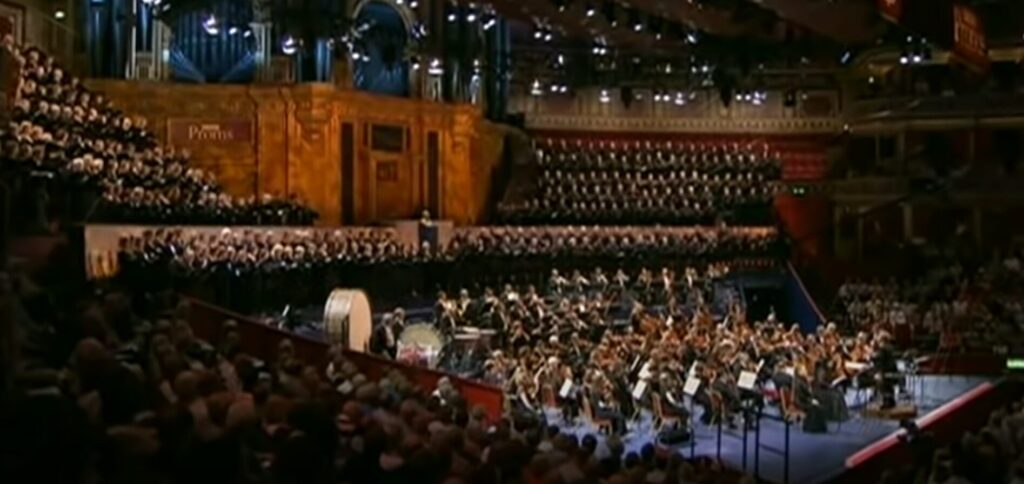
Works combining choir and orchestra are among the most imposing in the repertoire, both because of the number of performers involved and because of the way in which the instruments intensify the message of the text. Composers have often been asked to set the text of the Mass to music, i.e. the Kyrie, Gloria, Credo, Sanctus and Agnus Dei. The oratorio, on the other hand, is a sacred genre that tells stories from the Bible, for example Mendelssohn’s Elijah, which presents the story of the prophet Isaiah in music, or Johann Sebastian Bach’s Passions, which recount the crucifixion of Jesus.
For its part, the requiem is the text of the mass for the dead, which seems to have inspired composers to write some of their most intense musical pages. The Lacrimosa from Mozart’s Requiem, for example, is a well-known excerpt, recently used in an episode of the British series The Crown. In the text of the requiem, the Lacrimosa is preceded by the Dies irae, which means « Day of wrath ». To represent the intensity of this violent text, the Italian composer Giuseppe Verdi used massive chords throughout the orchestra and bass drum hits in his Requiem. The menacing sound of the brass is brought to the fore, while the strings move frenetically in rapid passages.
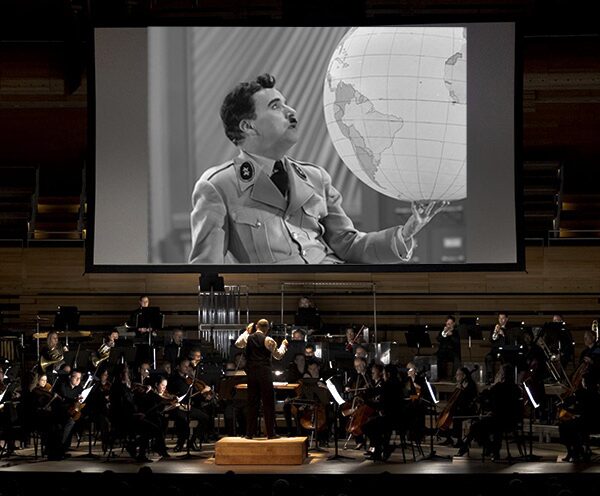
From the very first silent films in 1890, music has played an important role, with imaginative musicians at the organ or piano improvising soundtracks in real time to accompany the images on the screen. With the addition of sound to film, two avenues opened up: the re-use of existing works from the classical repertoire and the creation of original soundtracks.
Erich Wolfgang Korngold, an Austrian composer who moved to the United States after fleeing the rise of Nazism, enjoyed a flourishing career in Hollywood from the late 1930s to the early 1950s. The influence of his lush, epic symphonic soundtracks is still felt today in the works of John Williams and Patrick Doyle, among others. His Violin Concerto is based on themes he had written for films.
La musique de film contribue à établir l’atmosphère d’une scène, qu’elle soit enjouée, triste, menaçante ou remplie de suspense, et à en amplifier l’émotion, mais elle dialogue également avec les plans cinématographiques. Elle trouve de plus en plus une place dans la salle de concert, comme les célèbres thèmes composés par John Williams pour la série des films Harry Potter.Sous cet aspect, la musique de film se rapproche d’un autre genre de musique de concert apparu au milieu du XIXe siècle : le poème symphonique. Ce terme fait référence à des œuvres orchestrales inspirées de sources extra-musicales, comme des récits (roman, nouvelle, poème) ou des images (peinture, paysage). L’histoire de Shéhérazade, par exemple, a inspiré au compositeur russe Nikolaï Rimski-Korsakov un poème symphonique très apprécié, dans lequel deux thèmes contrastants – l’un, de caractère langoureux et empreint d’exotisme, et l’autre, affirmé et dramatique – évoquent les récits captivants des Mille et une nuits.
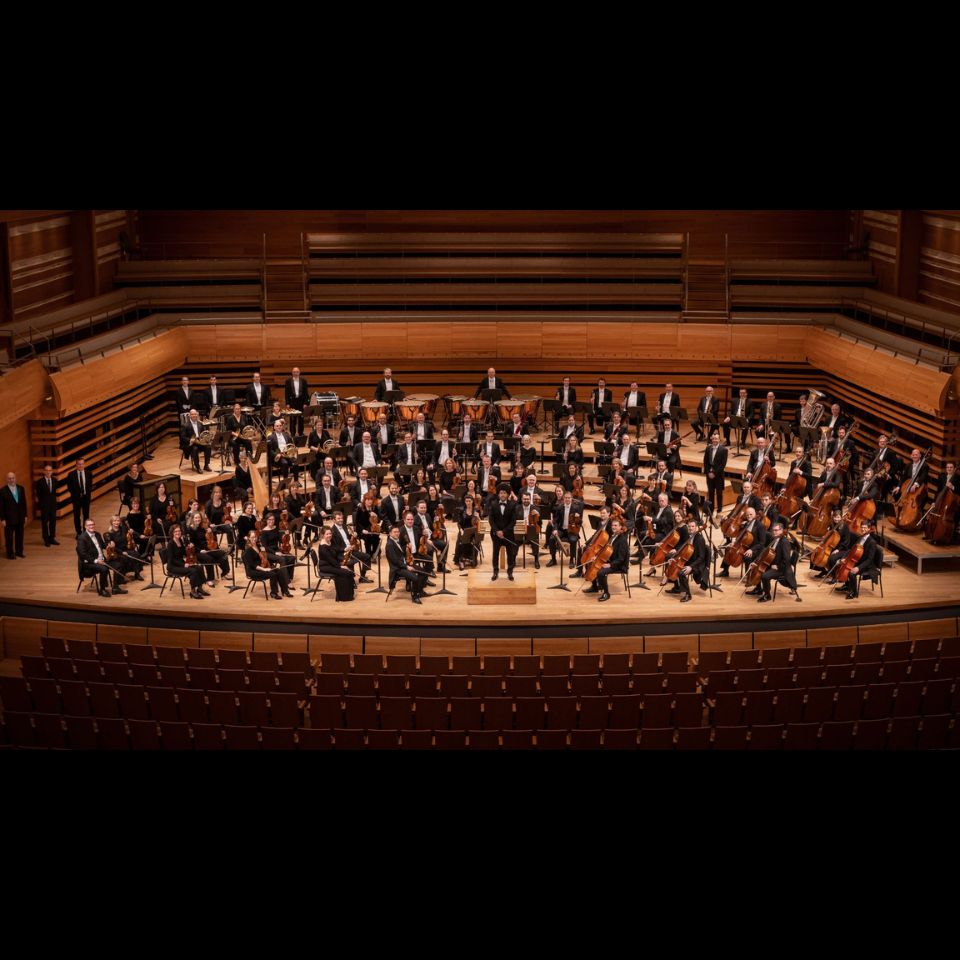
Although video game music also plays a role in supporting the image, narrative and action, the requirements of this music are different from those of film music because of the form and constraints of the medium. The music has to evolve in real time with the game, which is why it is known as « dynamic music ».
Initially, the technological capabilities of computers meant that pre-recorded music could not be included. The only sound effects were those that the computer was capable of producing itself, giving the electronic sounds that have acquired a vintage charm today.
With the development of memory capacities and sound cards, composers have been able to produce increasingly elaborate music that now has nothing to envy to film soundtracks – although it is often still produced digitally with sophisticated instrumental sound banks. This music contributes to the player’s deep immersion in the world of the game: it is undeniable that their contribution makes a major contribution to the brand identity of the games from which they are taken.
Like film music, video game music has acquired a status that allows it to be performed in concert before ardent and passionate audiences. Quebec composer Maxime Goulet has set up concerts entitled Symphonie du jeu vidéo, in which an orchestra on stage accompanies images projected onto a large screen of a video game being played live. This requires the conductor and musicians to be very alert, as they have to react spontaneously to the action – like silent film pianists in the early 20th century, but all at the same time!
There are still many interesting things to discover about the symphony orchestra, whether it’s the instruments that make it up, the fascinating professions that contribute to it or its vast repertoire. In the three videos that follow, Patrice Bélanger and Adam Johnson explain to us what the timbre of instruments is and how it can be modified, former OSM assistant conductor Dina Gilbert talks to us about the conductor’s gestures, and Eric Chappell introduces us to a rare and impressive instrument unique to the OSM: the octobasse.
Test your knowledge!
Match the following terms with their definition.
Hint: All the information has already been given in the guide!
| 1. Symphony | A) Features a solo instrument in dialogue with the orchestra |
| 2. Concerto | B) Technique pour pincer la corde plutôt que la jouer avec l’archet |
| 3. Orchestra pit | C) A particularly dramatic movement in the requiem |
| 4. Dies irae | D)The « grandfather » of film music |
| 5. Pizzicato | E)The work par excellence of the orchestral repertoire, comprises 4 movements |
| 6. Erich Korngold | F)Space under the stage where the orchestra plays for opera and ballet |
In the director’s shoes
1) Choose a scene from an existing film or video game.
2) Choose a work (or a passage from a work) from the symphonic repertoire as your soundtrack. Play both at the same time to superimpose images and sound.
3) Explain the links you feel between the images and the musical passage, referring, if possible, to concepts covered in the teaching guide (instrument families, timbres, musical genre).
Suggestions for musical works :
Keep your ears wide open!
What instrument(s) are we talking about?
Multiple-choice questionnaire, one or more answers possible.
1.E) ; 2.A) ; 3.F) ; 4.C) ; 5.B) ; 6.D)
All answers are accepted!
Extract 1 : a) This is an oboe solo from Tchaikovsky’s Swan Lake.
Extract 2: b) This is an extract from Jacques Ibert’s Flute Concerto.
Extract 3: a) This is an extract from Britten’s Simple Symphony, written for string instruments (but not for bass!). Here, the musicians play only in pizzicato.
Extract 4: b) and c) We haven’t talked about it, but the organ is also a wind instrument with almost infinite possibilities. This was the introduction to Jazz Variations On A Theme Of Paganini performed by Jean-Willy Kunz, the OSM’s organist in residence.